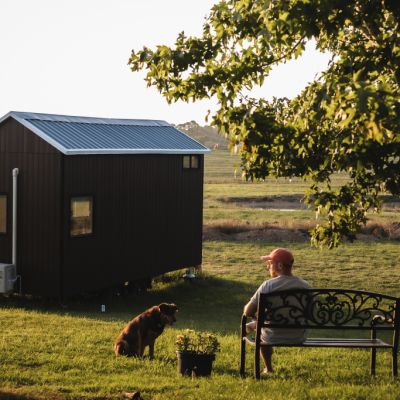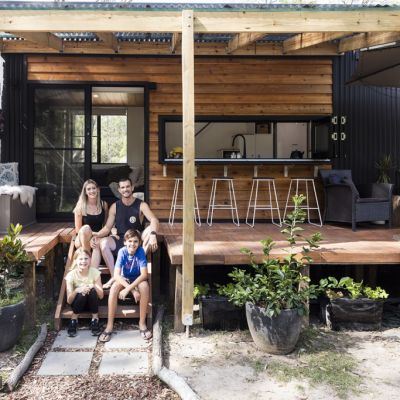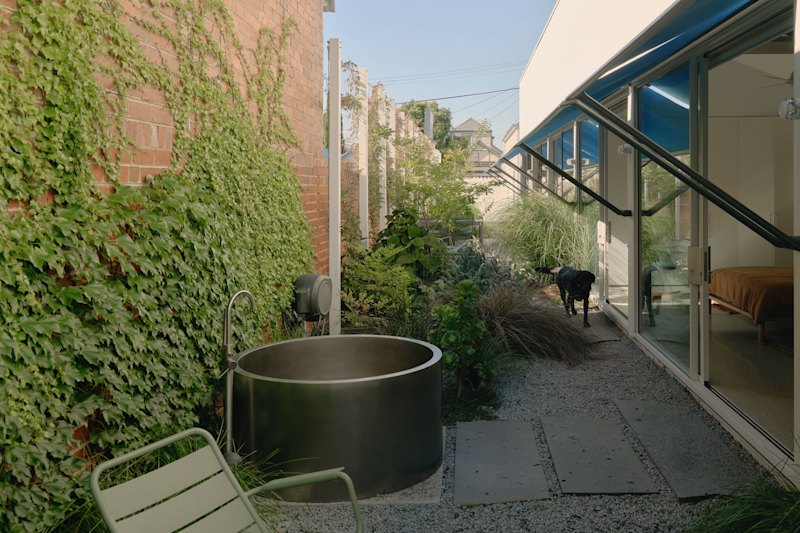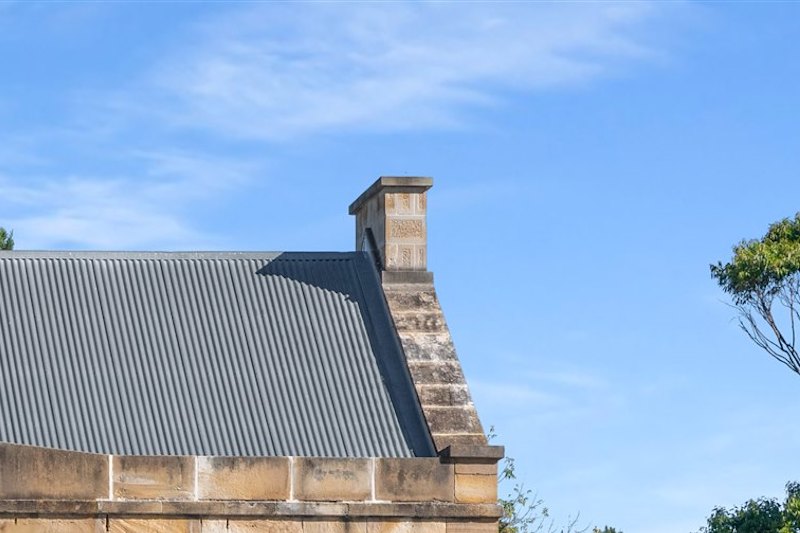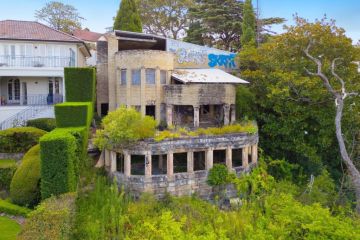The couple that converted a $6000 Volvo 'bendy bus' into their first family home
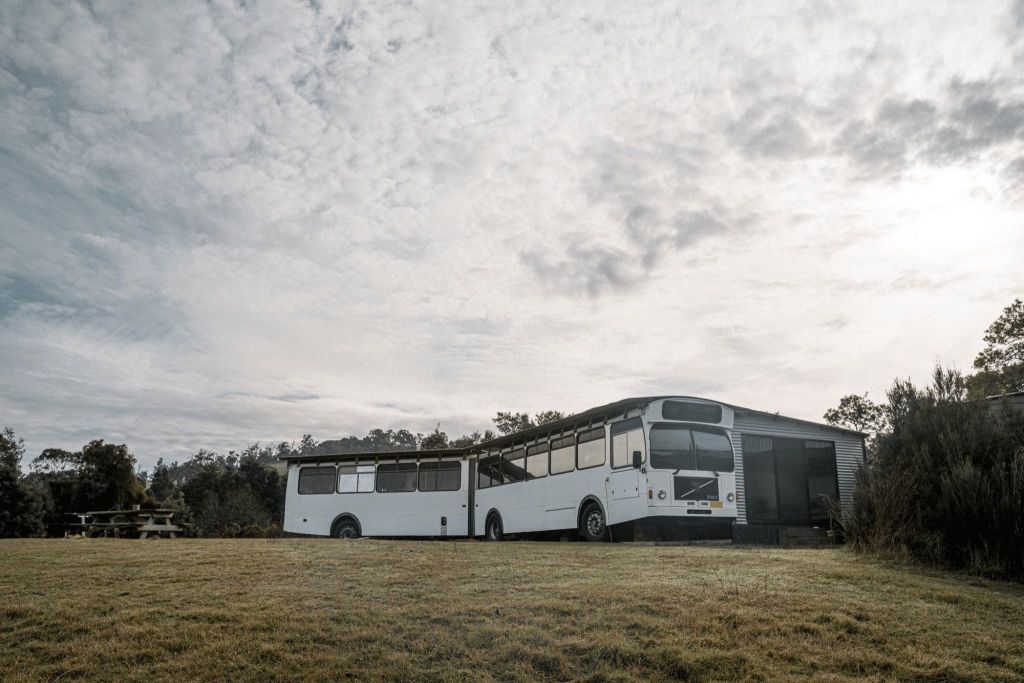
On a bush block next to the Tamar River in Tasmania, an articulated bus has been given a new life as a unique stay.
With a king-sized bed, Jotul wood stove and full kitchen, the old Volvo has come a long way since the 1980s when it ferried passengers around Hobart streets.
But it’s the period between then and now that were perhaps the bus’s glory days, when Emma Hill and her husband Nick – big fans of all things second-hand – lived in the ‘bendy bus’ with their little family.
They bought the retired metro bus through Gumtree for a bargain price of $6000 when Emma was pregnant with their first child.
“It was in great condition,” Emma says. “Old, but everything still in place, seats and all.”
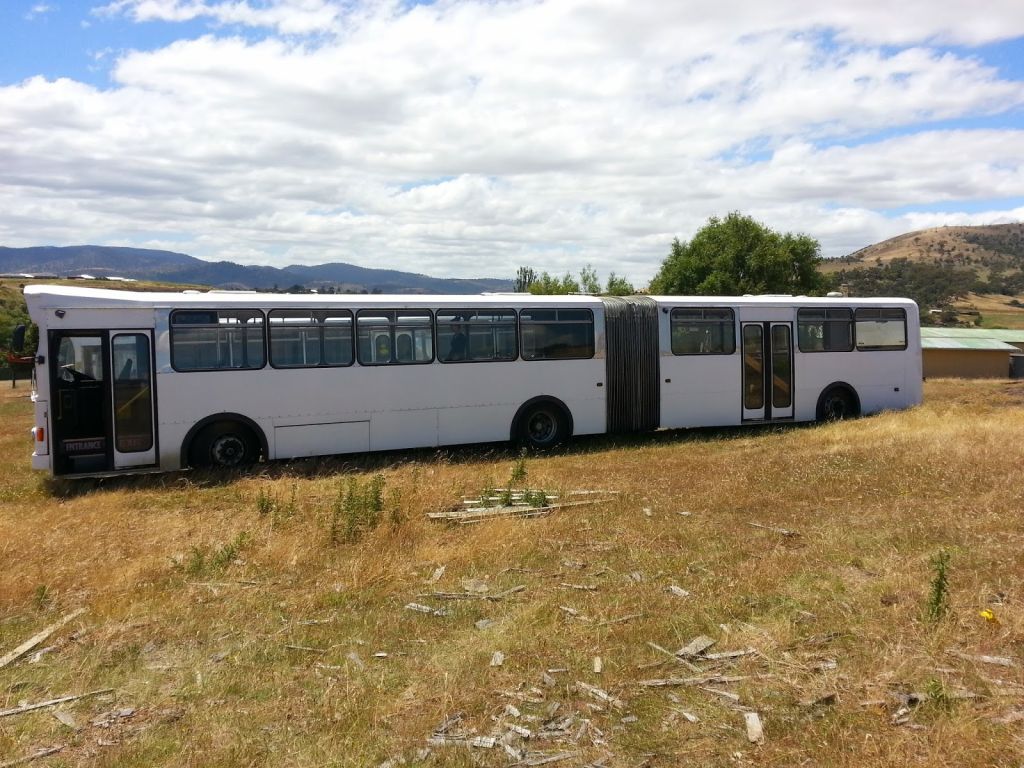
Unlike many bus-loving couples, road-tripping wasn’t on the cards; they wanted a child-friendly dwelling on their block in Hillwood, 25 kilometres north of Launceston.
“We were intrigued by tiny homes and downsizing, and not having huge amounts of stuff,” Emma says. “Intentional living and simplicity were attractive to us.”
Before they moved in, Nick spent 12 months working on the bus – “a big, slow, creative process” of removing seats then working with the odd contours and huge wheel arches of the bus’s shell to install furniture that he custom-made.
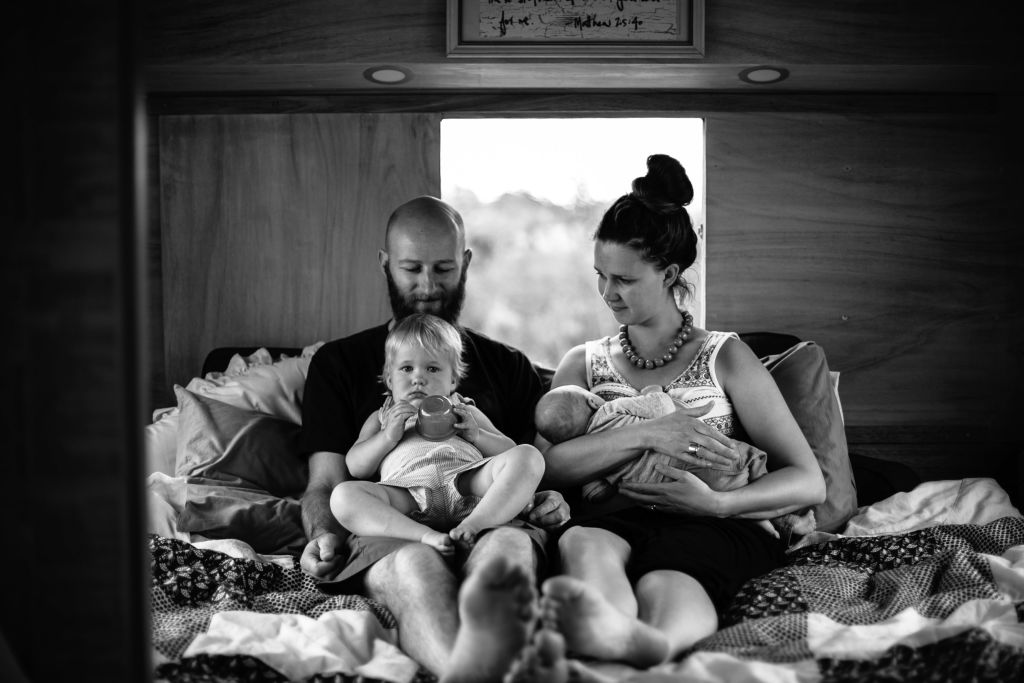
“Nick is a very handy, clever man and has done all the building and creating,” Emma says. “I loved working on the interior side and making it a cosy home.”
Aside from the electrical work, Nick did almost everything “right down to the fronts on the drawers in the kitchen, the couches and the lift-up king bed up the back of the bus”.
Their first child, Hudson, was 16 months old when they moved in, and Emma was pregnant with their second baby.
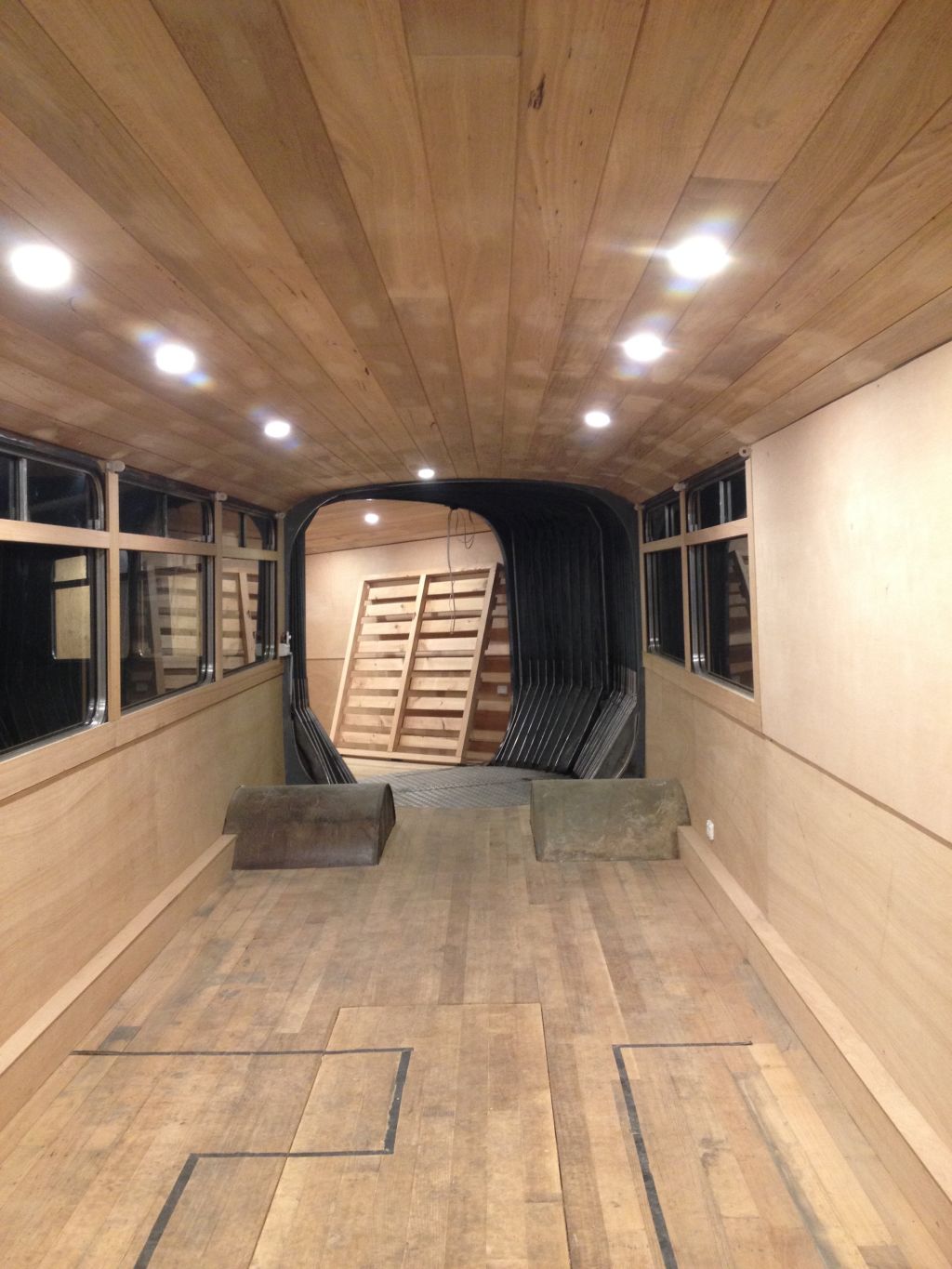
The little home wasn’t completed – the bathroom wasn’t installed yet, so they’d trot up the road to Nick’s parents’ place to use theirs – but Emma remembers those days of “luxury camping” fondly.
“We moved in as soon as it was liveable. We were so excited. Hudson loved it. He had his little cot set up in his own little room, not far from us in the back of the bus. It was very cute.”
With no room for excess junk, they had to keep the toddler chaos to a minimum.
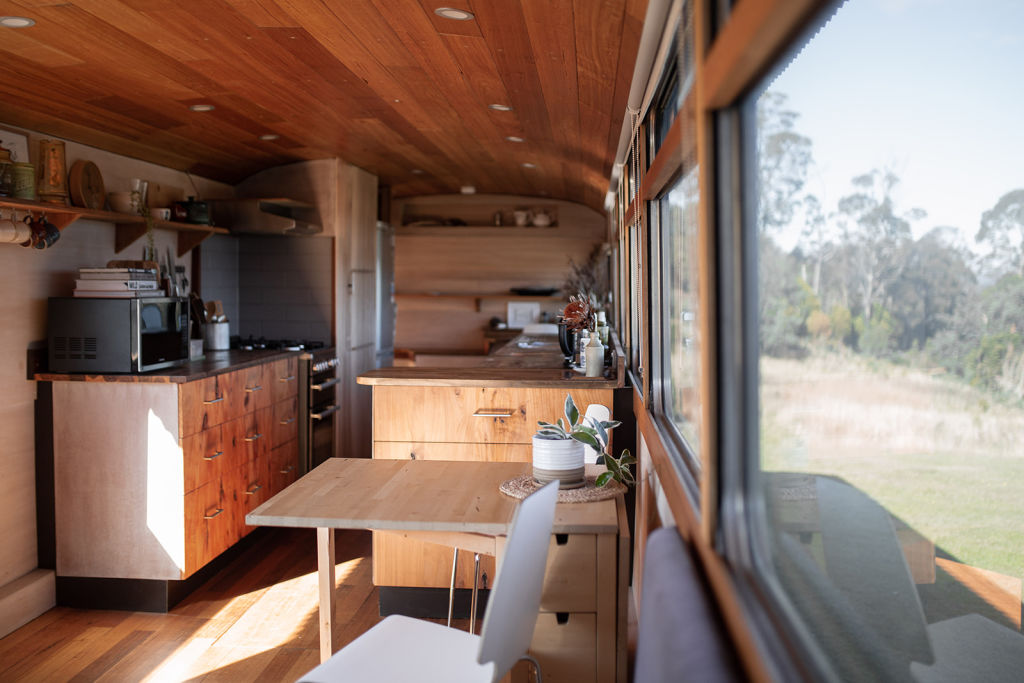
“Kids bring with them so much clutter, and being in a small space helped to curb this,” Emma says.
As far as she and Nick were concerned, Hudson had everything that mattered – some books and toys that would fit on overhead shelves and the great outdoors to roam in.
Plus, the bus was often filled with friends and loved ones, with an extendable table and big couches so that people felt welcome while indulging in big meals cooked slowly over the wood stove.
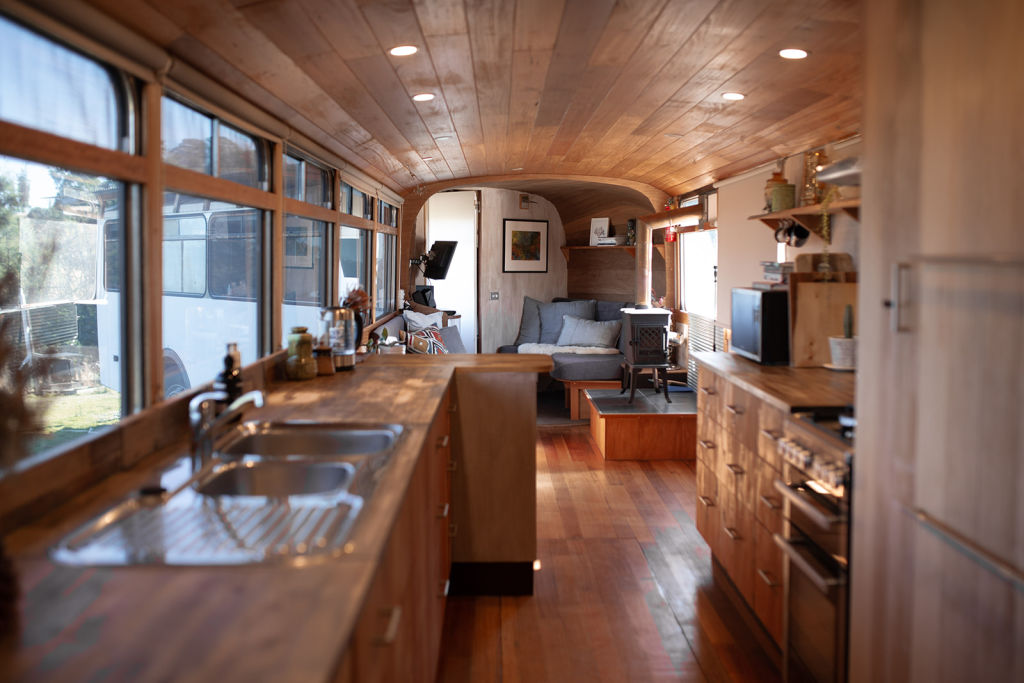
“Hospitality is important to us, and I love that we could still make that work,” Emma says.
There are also special memories of the days after their second son, Zac, was born.
“I laboured at home in the bus with him for a while before heading to the birthing centre, and then a day later, we brought him home to the bus.”
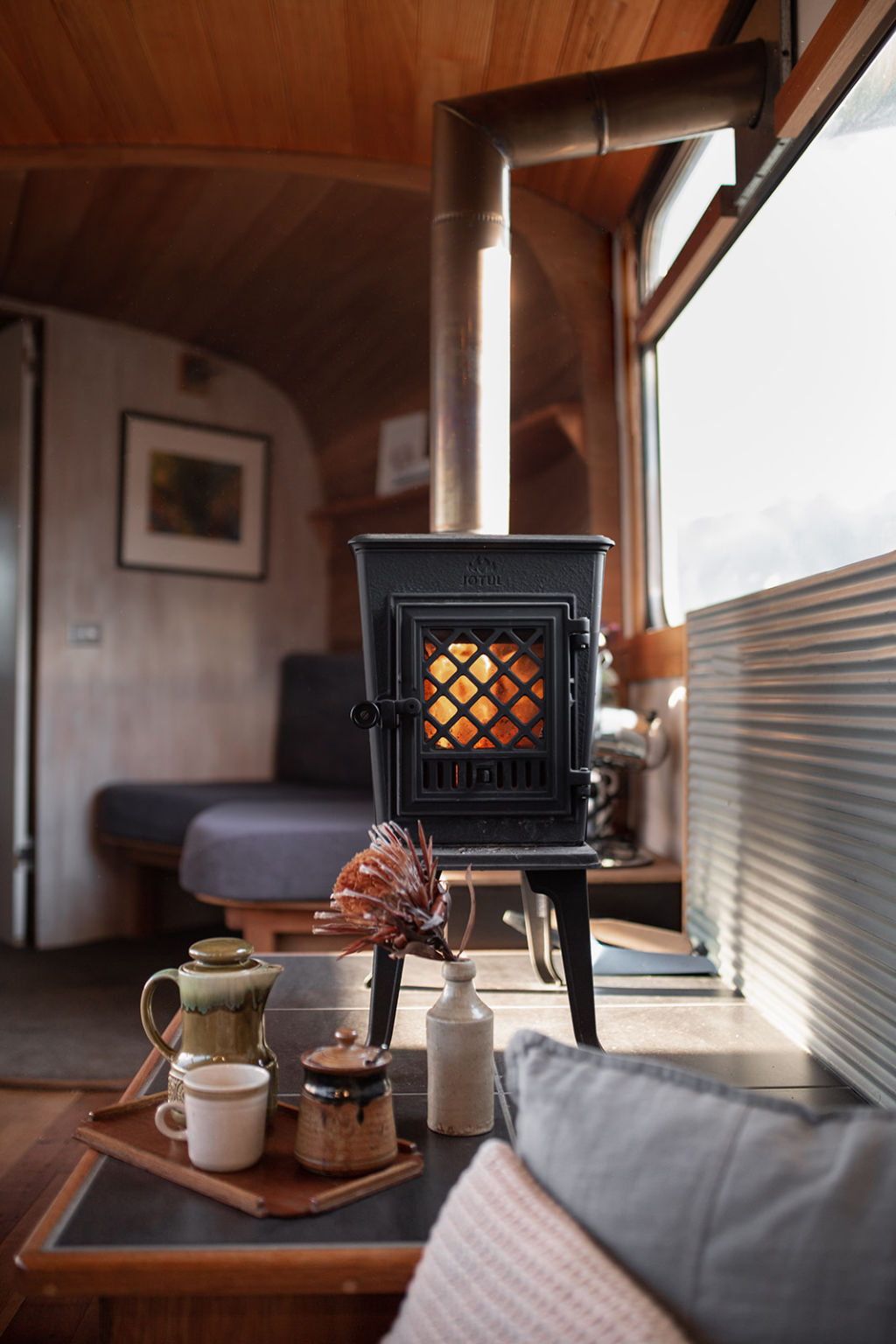
Baby Zac slept in a little hammock, while Hudson slept in a cot until they got big enough to graduate to a bunk bed.
Emma says there were some dark days, too, especially during the cold Tassie winter when Nick was working, and she was stuck inside with two active toddlers.
To provide more space to “set up their train set and let off some of that energy”, an additional room, called “the pod”, was added to the bus.
These days, Emma and Nick are parents to three boys and have outgrown the home they created. When they moved into a house, friends suggested offering the bus as guest accommodation, and The Bus Hideaway was born.
It’s still full of thrifty treasures the couple love, with the added comforts of linen sheets, hand-made ceramics and artwork by local artisans.
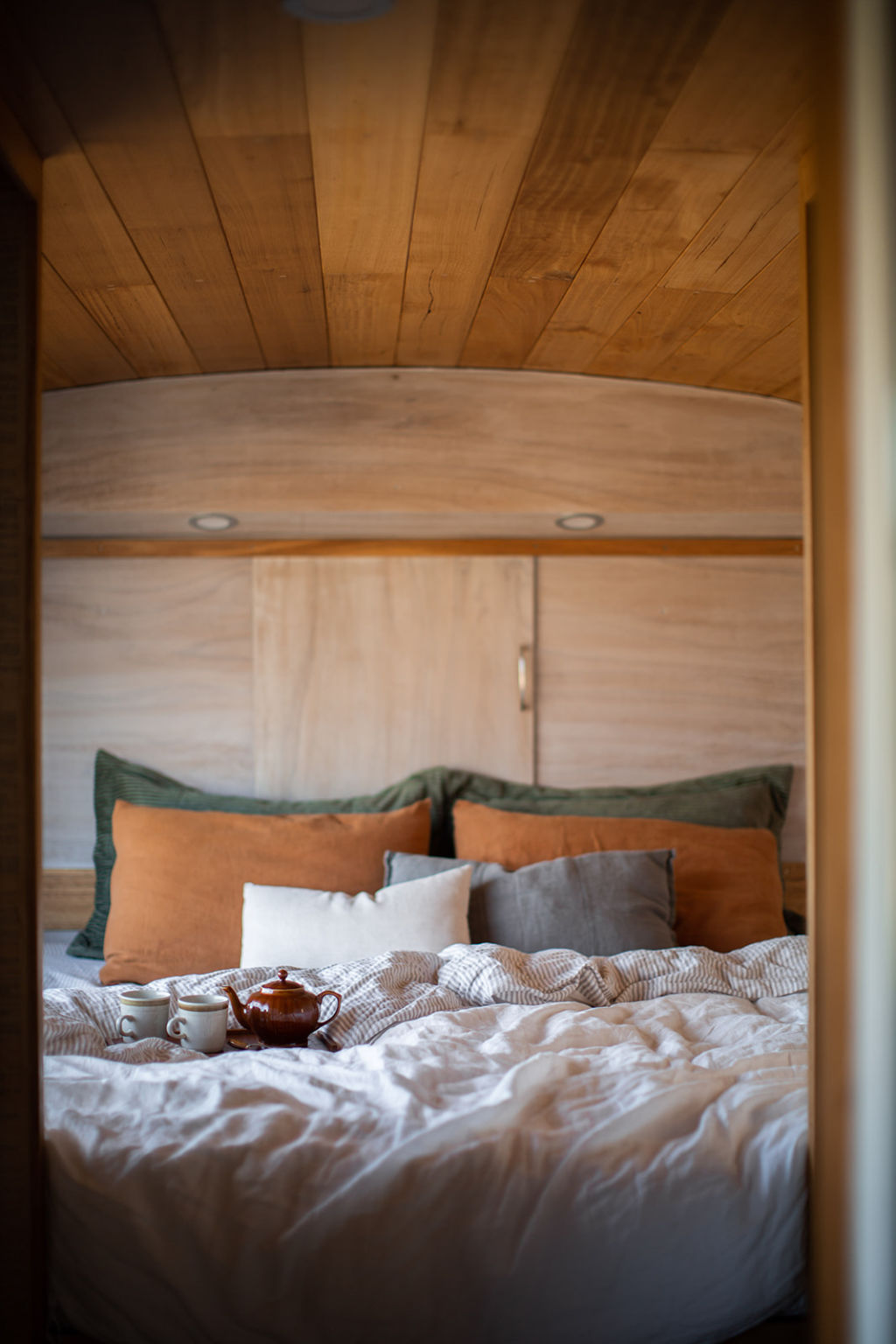
“It looks like my little dream home without all the kids’ chaos,” Emma says.
She loves that she and Nick put it together as their own home, rather than starting out as a holiday rental which might have added pressure to make it look more generic.
“It’s authentically what we love and what we’re about, and not what we think an Airbnb should look like.”
And within it, Emma says it still holds memories of raising their babies in a big, old Volvo bus.
“The memories of us all in the king bed, breastfeeding Zac and looking out to the stars with the cool breeze streaming through, and just hearing the swaying of trees and the cicadas are memories I will treasure forever.”
We recommend
We thought you might like
States
Capital Cities
Capital Cities - Rentals
Popular Areas
Allhomes
More

